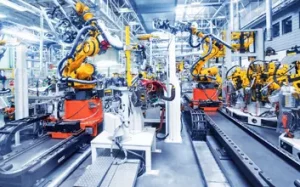Manufacturing involves with complex processes which need to be carefully streamlined. The process involves aggressive planning and utilization of company resources. It typically starts from receiving the raw materials to shipping the end products to users. The meticulous workflow of an entire manufacturing process requires smart support systems which can organize different processes and optimize the output efficiently. Science and technology has always played a part in it and the emergence of better IT solutions have brought a number of reforms to the manufacturing sector and SAP is one of them.
This has made a great impact; however, at one point in time, it looked like there should be more to it to meet the growing demands of the sector. There needed to be more applications and utilities to support the bigger manufacturing work environment and integrating SAP or ERP systems with other business applications becoming inevitable. There are number of SAP applications genuinely helping the process to be streamlined, providing spectacular results in every area of manufacturing.
SAP’s software structure has many different architectural layers. It is a multi-channel system, which makes it all the more interesting in this world of responsive design and endless number of devices. It can be displayed on a standard SAP desktop, mobile device, or portal. This makes things smooth and comfortable because mobility has already become the mainstay of enterprise activities. Using mobile devices and applications for day-to-day work is so common among employees and that boost their productivity to a greater level.
In regards to keeping the data and information intact, companies want safe and secure transactions, especially to a non-SAP system. When an organization allows the data flow from a SAP system to a non-SAP system, they are much concerned about the security. However, there is always a need for non-SAP system as the manufacturing sector is evolving so fast, forcing them to adopt progressive changes. There are many smart applications, helping out with different tasks which can be integrated to their SAP system as well. They do not wait so long to take decisions in this regard; however, they always have concerns about the safety and performance. They do think that whether the direct data flow from the SAP to a non-SAP system would pose some kind of security threats or performance issues.
This is the situation prompted IT to find out more amicable solutions for this and among many emerging solutions middleware captured the attention of enterprises. At present, there is an increasing trend of utilizing middleware options for integrating SAP and non-SAP software. SAP direct integration with any third party application has always been discouraged mainly because of 2 reasons—safety and performance issues.
Safety
Security comes as a major concern for any firm. There arises hesitancy when there is a need to use the data more openly. They would not allow the data to be fetched directly from the SAP system, fearing that the security of the data would be compromised. As middleware has become a part of the company’s IT strategy, the SAP integration scenario has changed for better. Manufacturing industries have been benefitted from an array of middleware technologies that help them to have cost effective solutions. There are many useful applications that sync really well with a whole SAP system and provide greater value to the users without having fear of security mishaps.
Performance
When there is a need to integrate SAP with other systems or applications, there will always be a concern of performance issue. This is effectively resolved with the introduction of middleware or a third party tool. The solution helps in upgrading the system in regular intervals. This process is not interrupting the whole functionality of the SAP system. Instead, it helps to straighten out the entire process.
When manufacturing units try to utilize the emerging IT power, it is not just SAP, but many other utility applications come into the picture. One cannot be so stubborn and shut themselves when the entire world is opening up on data and knowledge sharing. This is clearly a shift away from the traditional SAP practice and utilizing smart applications have become a common thing. A number of mobile applications are in place to boost manufacturing growth today through many activities including plant maintenance, productivity, safety, quality assurance, etc. These applications are mainly used for automate work process and integration made everything possible for them.









